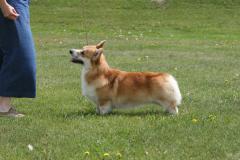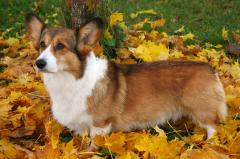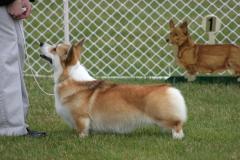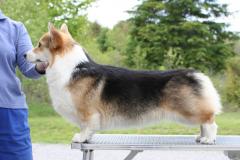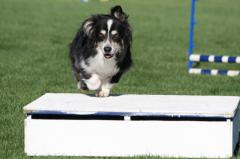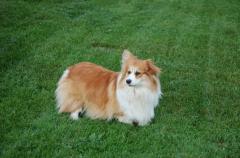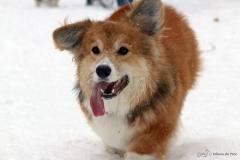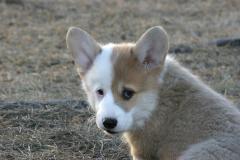Colours & Coat Types
From the official standard: The outer coat is to be of self-colours in red, sable, fawn, black and tan, all with or without white markings on legs, chest, neck (either in part or as a collar), muzzle, underparts or as a narrow blaze on the head or foreface.
This defines 4 colours allowed in the breed: Red & White (from fawn to mahogany), Sable & White (black tipped hair in various locations depending on the other colour the dog carries, Red Headed Tricolour (a primarily black dog with tan and white markings. The area of the black may lessen over the lifetime of the dog), and Black Headed Tricolour (defined by black that covers the eyes with defined tan points on cheeks and eyebrows)
Note:
No other colours are allowable in the breed though a dilute gene is present and may crop up on occassion called a Bluie. These dogs have a distinctive smokey cast to their colour and pigment on their nose and eye rims will also be slate grey or liver coloured. These dogs should not be bred though they will make fabulous compainions. Be cautious of anyone breeding for disallowed colours, often marketed as 'rare' and thus more expensive, with little thought towards the proper preservation and betterment of the breed. In recent years there has seen an increase in 'merle pembrokes'. These are not purebred and are often produced by breeding a blue merle Cardigan Welsh Corgi to a Pembroke. The merle gene can cause health issues with deafness and blindness if it is doubled up on.
Fluffies
The pembroke has a recessive gene that allows a long coated puppy to be born on occassion. While these puppies are absolutely adorable, they do often require additional grooming. There are no health concerns linked to the fluffy coat and thus most breeders don't mind having them crop up in their litters. They make great companions as long as the owner is willing to put in a little extra coat care and maintenance to ensure their hair does not mat or tangle.
Mismarks
White is allowed in certain areas on the breed. It is understood that too much white, particularily on the head, may be linked with a gene for deafness and thus good breeders try to avoid it. On occassion a puppy with more white than the official standard allows is born. They make great companions and should not be bred.
